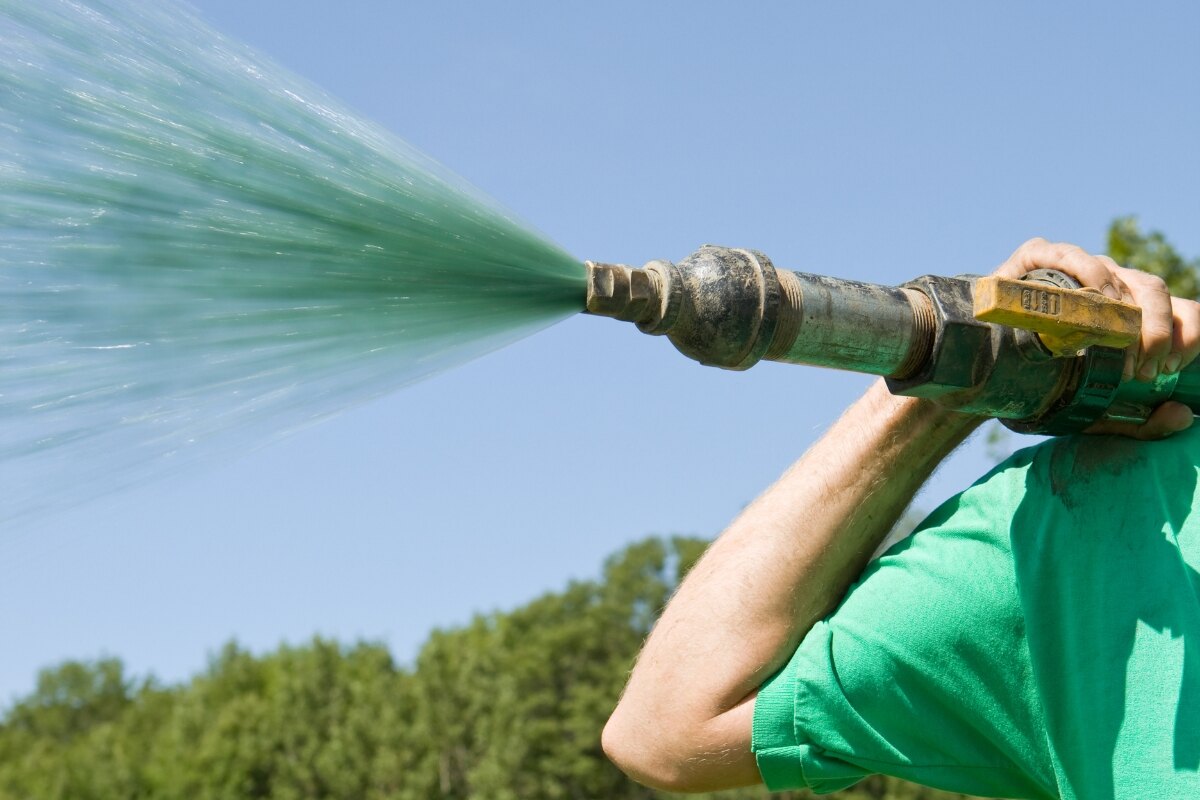Table of Contents
- What is Hydroseeding?
- Benefits of Hydroseeding
- Cost Effectiveness
- Step-by-Step Hydroseeding Process
- Hydroseeding vs. Traditional Seeding
- Common Questions and Misconceptions
- Environmental Impact
- Choosing the Right Seed Mix
What is Hydroseeding?
To encourage growth, a slurry of seed, mulch, and other essential ingredients is applied during the hydroseeding planting process. This method is commonly used for large-scale land areas and ensures even distribution and efficient development. The hydroseeding mixture may be administered swiftly and efficiently using a specialized spray covering large regions.
Hydroseeding offers a compelling alternative in regions where traditional seeding methods might fall short. Combining seed, mulch, water, and sometimes fertilizer addresses the challenges of erosion and poor soil quality, ultimately leading to healthier and greener landscapes.
Benefits of Hydroseeding
The benefits of hydroseeding extend beyond mere aesthetics. One primary advantage is the rapid establishment of vegetation. The mulch in the slurry helps keep seeds in place, ensuring better soil contact, which accelerates germination and fosters more robust initial growth. Hydroseeding also minimizes soil erosion by providing a protective layer that shields the soil from wind and water.
Another notable advantage is the consistency of coverage; unlike conventional seeding techniques that may result in uneven growth, hydroseeding guarantees the distribution of seeds throughout the soil. This uniformity promotes a visually appealing, lush green landscape and improves soil health. Consider hydroseeding for effective dust control Southern California. Moreover, hydroseeding can be cost-effective in the long run, as it often requires less water and maintenance than traditional methods.
Cost Effectiveness
Hydroseeding may come with a higher upfront cost compared to traditional seeding methods. However, its long-term benefits frequently make it a more economical choice. According to Realtor.com, homeowners who opt for hydroseeding often find that their lawns require less water and maintenance, leading to lower overall costs.
The initial investment can also be offset by quicker vegetation establishment, reducing the need for frequent reseeding or repairs. Additionally, a well-established, healthy lawn can enhance the overall value of a property, providing another layer of financial benefit. The long-term savings on water, fertilizers, and maintenance make hydroseeding an intelligent investment for residential and commercial properties.
Step-by-Step Hydroseeding Process
Hydroseeding is straightforward but requires careful preparation and execution to achieve optimal results. Here is a step-by-step guide:
- Prepare the Soil: First, remove any rocks, weeds, and other trash from the area. Ensuring a clean, smooth surface will help the slurry adhere better to the soil.
- Mix the Ingredients: Combine the seed, mulch, water, and fertilizers in a hydroseeding tank. The mixture should be well-blended to ensure even distribution.
- Spray the Slurry: Use a specialized hydroseeding machine to spray the mixture evenly across the prepared soil. This step is crucial for achieving uniform coverage.
- Water Regularly: Keep the area well-watered until the seeds begin to germinate. Consistent moisture is critical to successful growth.
- Ongoing Maintenance: Once the vegetation is established, maintain it by mowing, watering, and fertilizing as needed. Regular care will keep the lawn healthy and vibrant.
Hydroseeding vs. Traditional Seeding
Several factors come into play when comparing hydroseeding to traditional seeding methods. According to Better Homes & Gardens, hydroseeding offers quicker results and often produces a more uniform lawn. Traditional seeding, while less expensive initially, can be labor-intensive and usually requires high maintenance to achieve the same results as hydroseeding.
Hydroseeding allows for a more controlled application of seeds, reducing the likelihood of uneven growth or bare patches. Furthermore, the mulch in the hydroseeding slurry acts as a protective barrier, retaining moisture and nurturing the seeds as they germinate. This contrasts with traditional seeding, where soil erosion and seed displacement are common issues. While both methods have their merits, hydroseeding stands out for its efficiency and effectiveness.
Common Questions and Misconceptions
Many people have questions about the viability and specifics of hydroseeding. One common question is whether hydroseeding is suitable for different climates. The answer is yes; hydroseeding can be adapted to various climate conditions by selecting the appropriate seed mix. Another frequent misconception is that hydroseeding is only effective for large areas. Hydroseeding can also be an excellent option for small gardens and residential lawns.
There are also questions about the time it takes to see results. Generally, most people observe initial growth within a week, with the entire lawn establishment taking 3 to 4 weeks. Understanding these aspects can help homeowners and property managers make informed decisions about implementing hydroseeding for their needs.
Environmental Impact
Hydroseeding contributes positively to the environment in several ways. It significantly reduces soil erosion, helping to protect the landscape and maintain soil health. This method also enhances water retention in the soil, particularly in arid regions or areas prone to drought.
Using biodegradable materials in the hydroseeding slurry further enhances its environmental benefits. These materials break down naturally, adding nutrients to the soil and supporting sustainable landscaping practices. Whether for residential lawns or large-scale commercial projects, hydroseeding offers an eco-friendly approach to lawn care that aligns with contemporary environmental standards.
Choosing the Right Seed Mix
Selecting the right seed mix is essential for the success of any hydroseeding project. Climate, soil type, and the area’s intended use are crucial in determining the appropriate mix. Consulting with a professional can ensure these variables are adequately assessed, leading to better outcomes.
A tailored seed mix ensures the hydroseeding yields a robust, healthy lawn. For example, drought-resistant seeds might be ideal for arid regions, while shade-tolerant varieties could be better for areas with limited sunlight. By carefully choosing the right seed mix, you can maximize the benefits of hydroseeding and achieve a lawn that meets your specific needs and preferences.










